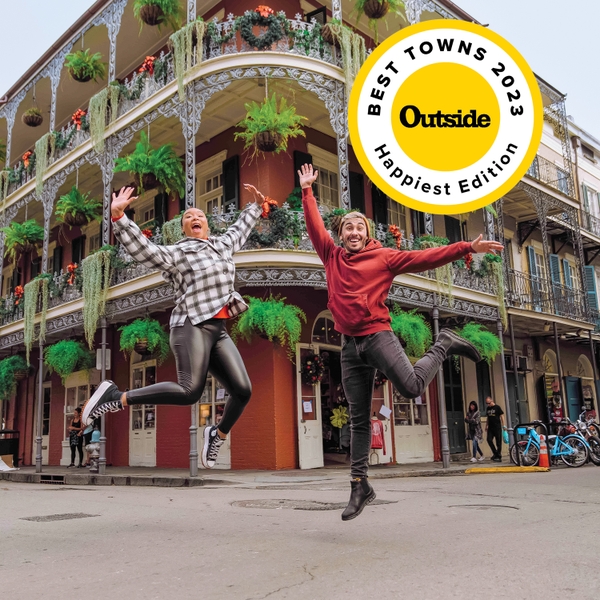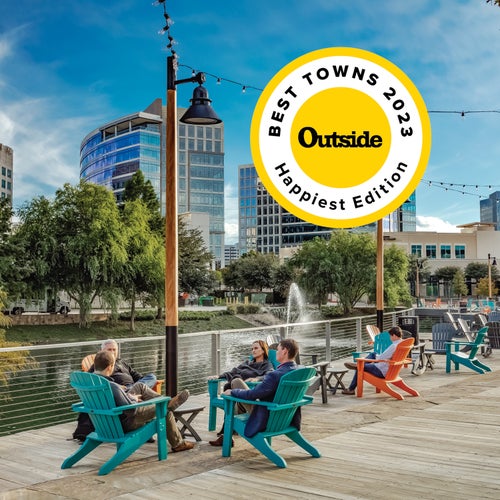The 15 Happiest Places to Live in the U.S.
People are searching for community, better quality of life, and more outdoor access. These towns check all of those boxes and then some.
Heading out the door? Read this article on the Outside app available now on iOS devices for members! Download the app.
This year for our annual Best Towns package, we decided to go in search of the happiest towns in America. Why did we choose this focus? Because the world is still rethinking how to work and live post-pandemic, and many people are searching for that perfect place to move to where they just feel better. We’ve also long been inspired by the World Population Review’s annual Happiest Countries in the World list and decided that the U.S., and our readers, could benefit from some similar advice.
The project was an enormous undertaking, and we turned to Outside researchers Philip Kiefer and Delilah Friedler to sort through piles of facts and figures to land on these 15 towns. (See more on our exact methodology below.) Once we had the list of places, we asked our writers—who are based around the country and have lived in most of these locales—for their expert reporting and intel.
What constitutes a happy town? It comes down to things like ample outdoor access for all, affordability, a safe environment, diversity, and freedom for residents to be who they are. Let us know what you think of our choices. —Associate managing editor Tasha Zemke and deputy editor and travel director Mary Turner





















